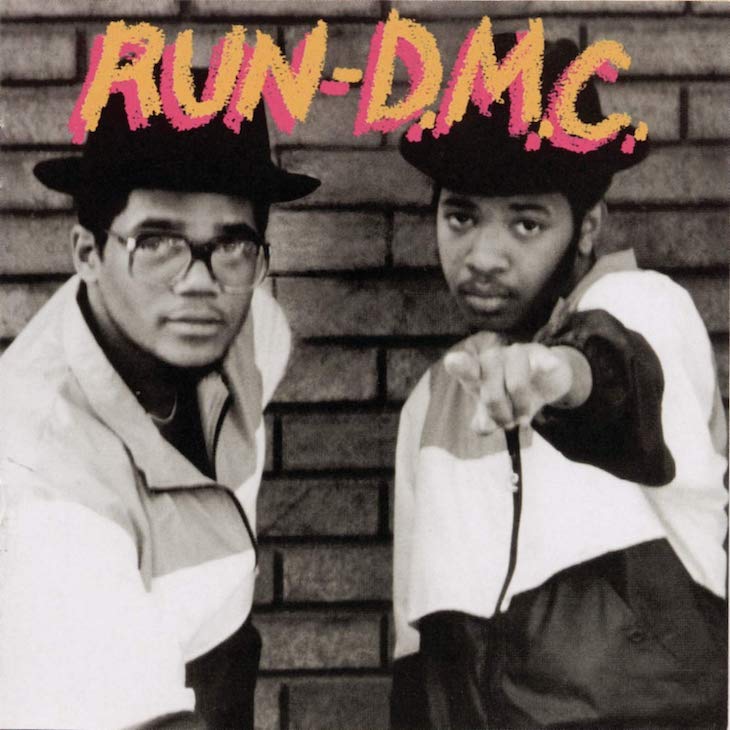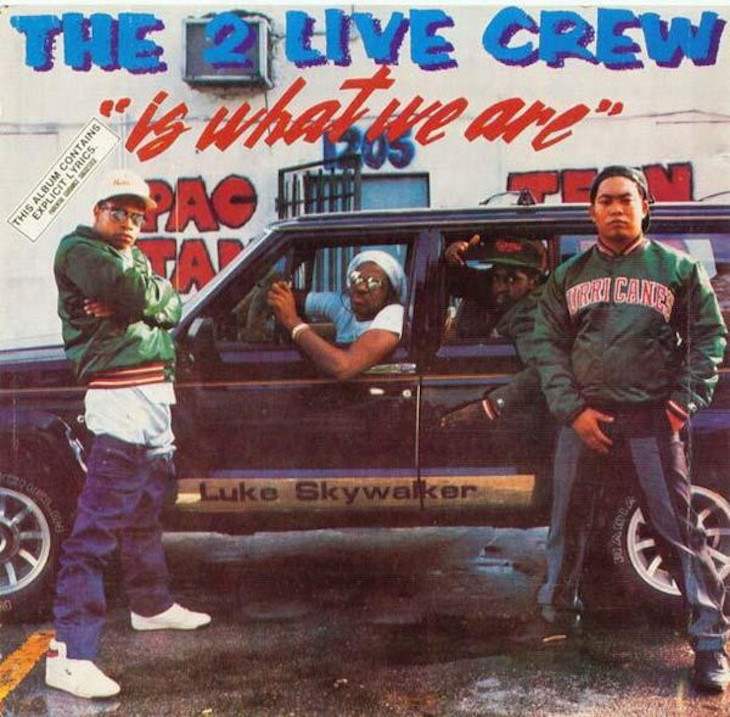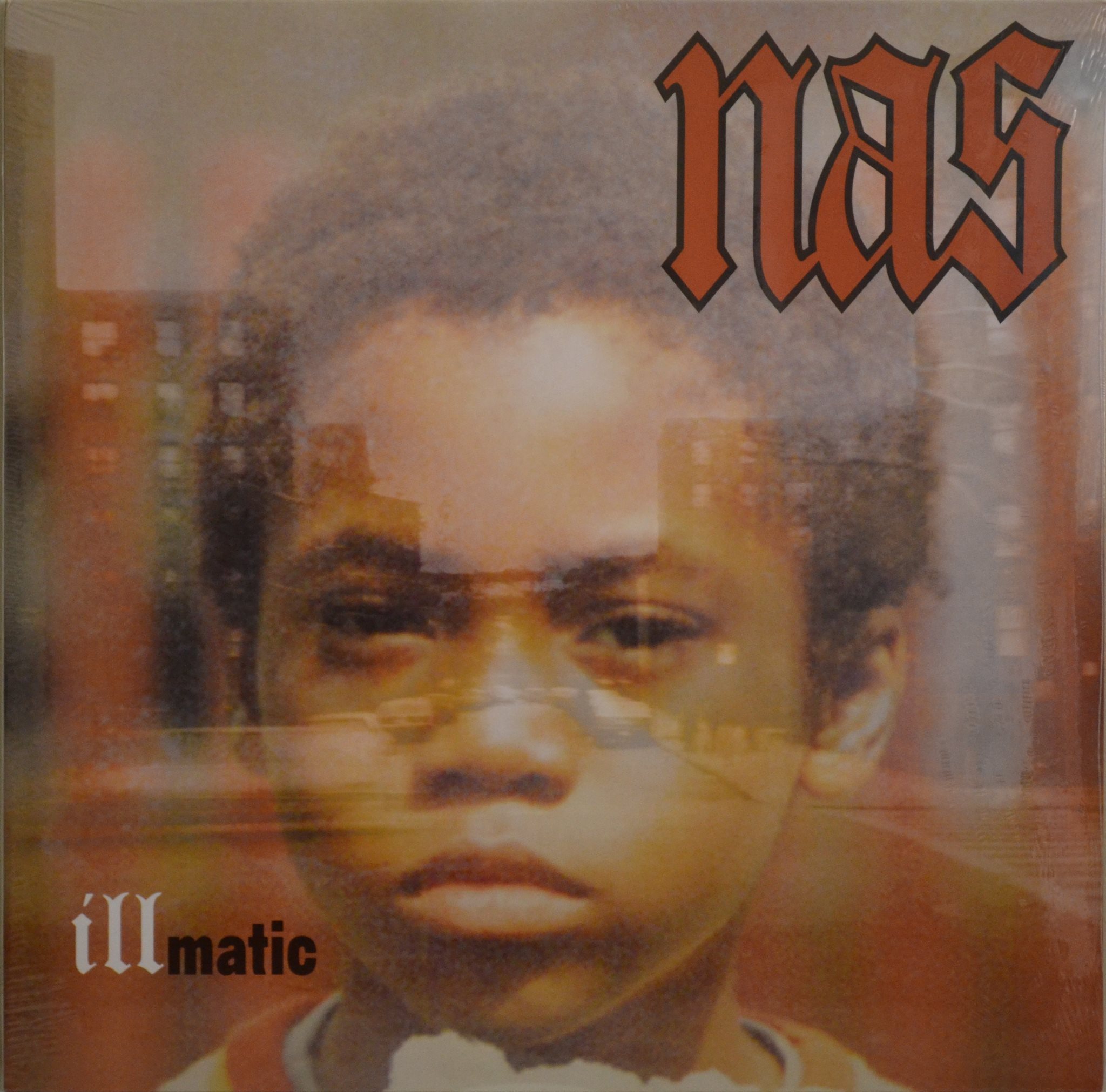
The 25 Most Important Rap Albums Of Hip-Hop’s First 50 Years
Over the years, countless music lists have laid out the “Greatest” of a particular category–album, artist, song, etc. These lists often cite vague criteria and then lay out what they claim to be objective rankings. But, they are subjective.
At Ambrosia For Heads, we have generally provided opportunities for the people to make these decisions. In 2014, we created a bracket-style tournament featuring 168+ artists so fans could determine who is Hip-Hop’s greatest MC.
In subsequent years, we facilitated similar debates about the GOAT Rap album, producer, Hip-Hop group, and more. Just this Spring, in partnership with BET, we curated a contest that let voters choose the Greatest Rap Crew of all-time. We have sought to make the subjective objective, at least as much as possible.
Something like the “Greatest” can never truly be objective. There are opinions that can be held by more people than others, but they are still just opinions. “Importance,” however, feels different.
It was important to Hip-Hop culture when Sylvia Robinson decided to record three guys “rapping to the beat,” and share that with the world. It was important when two of Rap’s brightest stars were taken from the world less than six months apart. It was important when Hip-Hop took over the greatest stage on Earth, for more than 103 million people to see. It was important when DJ Kool Herc threw a party 50 years ago…
In celebration of Hip-Hop’s 50th anniversary on August 11, 2023, we at AFH are paying homage to the Most Important Rap Albums of All-Time. These may not be the most popular albums, the most acclaimed or even the most respected, but each had an outsized impact on Hip-Hop.
Whether they launched a new genre, put a new region on the Rap map, shifted how people viewed Hip-Hop or showed just how powerful the culture is, these are the 25 albums that mattered most in Hip-Hop’s first 50 years.![]()
The 25 Most Important Rap Albums In Hip-Hop’s First 50 Years (in chronological order)
Kurtis Blow – Kurtis Blow (1980)

Kurtis Blow’s self-titled debut album was truly seminal. The Mercury Records LP was the first ever to be released by a major record label, signaling that Rap music had now arrived on the big stage. Kurtis Blow also featured Rap’s first ever gold-certified record, by way of the monster single, “The Breaks.” That song and Blow’s “Christmas Rappin’” ultimately landed Blow the album deal.
More important than the stats, Kurtis Blow established its namesake as the first bonafide solo Rap superstar in the recorded era of Hip-Hop culture. While he earned that position with his charisma, good looks, and rapping ability, he did not do it by himself. A good deal of Blow’s success was due to the grit, guile, and brute force of his young manager, Russell Simmons. Simmons’ partnership with Blow in making Kurtis Blow a reality proved to be the training ground that would help him launch the careers of countless Hip-Hop legends and ultimately found the iconic Def Jam Recordings.
Run-D.M.C. – Run-D.M.C. (1984)
Run-D.M.C., the album and the group, ushered in the Modern Rap Era. Prior to Run, D and Jam Master Jay’s debut, Rap stars were more like R&B singers. They dressed in costumes and rapped over instrumentation that mimicked the Disco and Soul sounds of the time. Run-D.M.C. changed all of that.
Sonically, the album was extremely sparing. Most songs, like “Sucker M.C.’s,” featured nothing but hard-hitting drums and Run and D’s booming vocals. Others added occasional synth stabs and scratching, but still flexed a tough minimalism. The one exception, “Rock Box,” also was pioneering. Its Rap/Rock fusion propelled the song to become the first Rap video played on MTV.
With that video, the world saw the original aesthetic Run-D.M.C. brought with their debut album. They dressed like the cool kids from the streets, clad in Lee jeans, leather jackets, and, of course, their Adidas. Their image and sound broke down the wall for all after them to walk like they talked, on stage and off.
The 2 Live Crew Is What We Are – 2 Live Crew (1986)
2 Live Crew’s As Nasty As They Want To Be is their most notorious album, and rightfully so. That LP was the first in history to be deemed legally obscene. Its ultimate exoneration by the Supreme Court led to an unprecedented era of artistic freedom for musicians in every genre.
The 2 Live Crew Is What We Are, the group’s debut album, however, is what set the stage for that showdown. Songs like “We Want Some P___y” and “Throw The D” were every bit as nasty as anything on that breakthrough third album, and drew 2 Live Crew’s first obscenity charges. More importantly, the 1986 album announced more than just the crew. Long before Andre 3000 proclaimed it at The Source Awards, this album showed the Hip-Hop world that the South had something to say. The album’s trademark sped-up 808 drums also ushered in an era of Miami Bass that would go on to inspire Atlanta sonic pioneers like DJ Toomp and Lil Jon, laying the foundation for a Southern sound that still permeates the landscape today.
Licensed To Ill – Beastie Boys (1986)

While fighting for their right to party with Licensed To Ill, the Beastie Boys cultivated a new Rap identity. Mike D, AdRock, MCA, and producer Rick Rubin’s debut deliberately grabbed from Led Zeppelin, Slayer, and Black Sabbath to fuse Hip-Hop with crotch-grabbing Rock. The trio was strongly influenced by both Run-D.M.C. (who have some writing credits on the album) and Schoolly D before pouring in some of their own beer-swilling, cat-calling, and hotel-trashing antics. It opened the floor for white Hip-Hop identities and artistry, even if the Beasties abandoned this caricatured image and tone not long after the album was released.
Licensed To Ill paved a highway for varying white experiences in Rap. Decades before House Of Pain, Eminem, and Post Malone, the Beasties received a Pop/Rock embrace unavailable to all their peers. Licensed To Ill became the first and only 1980s Hip-Hop album to be certified diamond. The album blazed a trail for what Rap stars could look like and what they had to say.
Hot, Cool & Vicious – Salt-N-Pepa (1986)

Salt-N-Pepa’s debut album reached the next plateau for women in Hip-Hop. The album marked the first female act in the Rap genre to earn a gold and a platinum plaque. On a small indie label, Queensborough Community College students Cheryl James, and Sandra Denton (along with their eventual DJ, Dierdre Roper), conquered the mainstream with precise routines, style, and a New York attitude. Notably, a power-pack in pushing Hot, Cool & Vicious came after its release. In 1987, the platinum heat-seeking “Push It” was added to pressings just as “My Mic Sounds Nice” took flight. By early ‘88, the debut LP had achieved its commercial milestones.
“I don’t like the fact that there are so few women in Rap,” Salt told The LA Times upon release. “Rap is hardcore street music, but there are women out there who can hang with the best male rappers.” Salt-N-Pepa proved that. Cleverly using routines by Doug E. Fresh and Otis Redding as fodder for early traction, but their more original creations are most enduring.
Criminal Minded – Boogie Down Productions (1987)
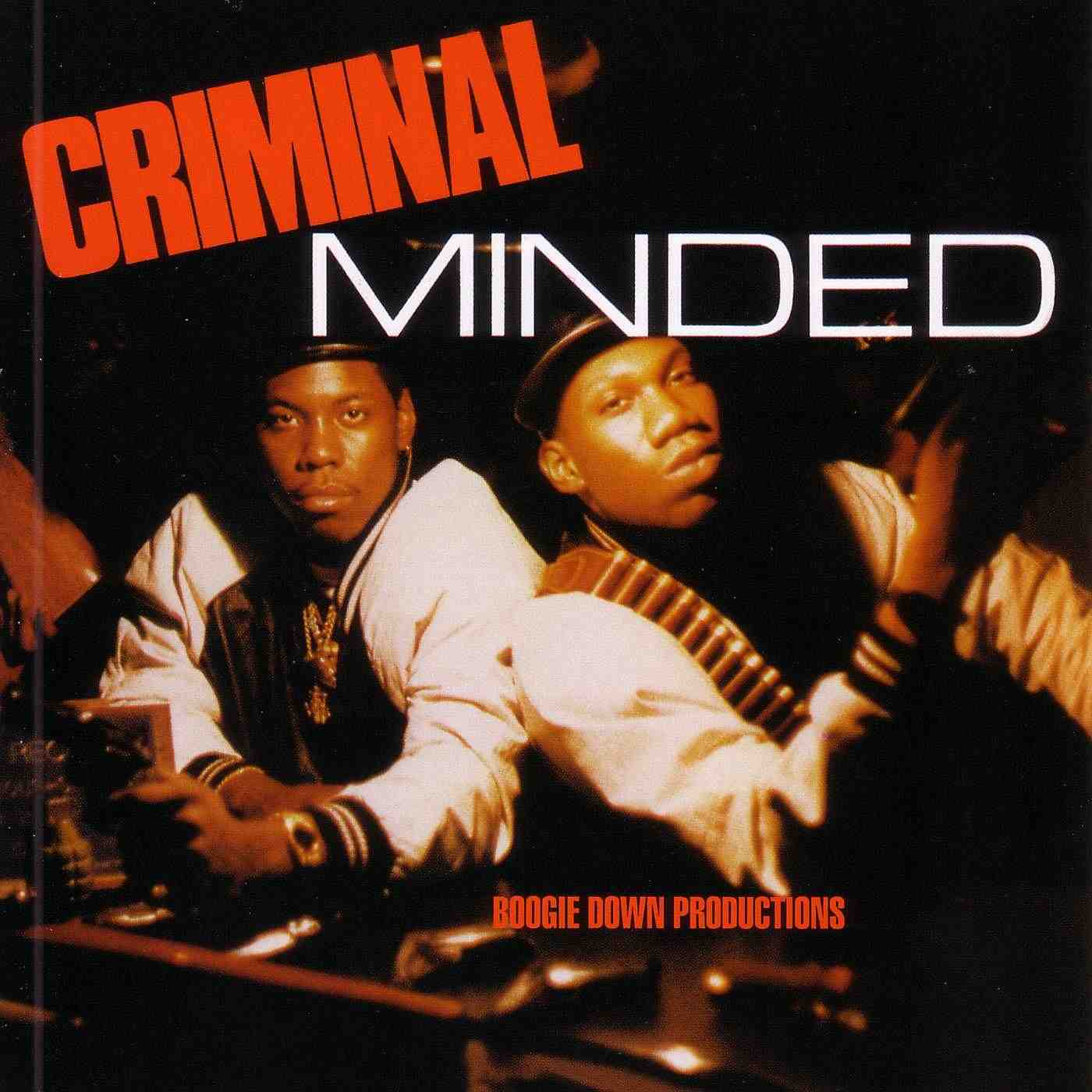
1987 was one of the most pivotal years in Rap music. The year solidified Hip-Hop’s shift from the celebratory sounds of artists like Run-D.M.C., LL Cool J, and The Fat Boys, to the hardcore reality raps of artists like Ice-T and N.W.A. Before those West Coast giants took the genre to a different level, Boogie Down Productions made the first high-profile Gangsta Rap album.
Despite BDP’s KRS-One rapping “we’re not promoting violence, we’re just having some fun” on the album’s title track, Criminal Minded was a quite literal representation of its themes. The album’s artwork featured KRS and DJ Scott La Rock each holding guns, with a number of other firearms on the table next to them. Scott has a grenade nearby and KRS is literally strapped with bullets. The album also features songs like “9mm Goes Bang,” a remorseless tale of gun violence.
Tragically, the Criminal Minded era also brought Hip-Hop’s first loss to gun violence, with the death of Scott La Rock. Perhaps, it was that tragedy that birthed the consciousness that has been associated with KRS-One since 1988.
Paid In Full – Eric B. & Rakim (1987)
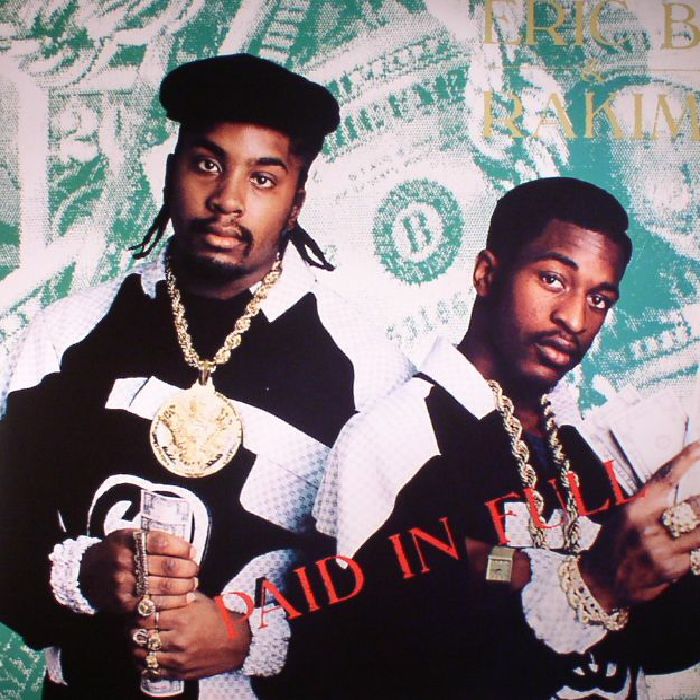
When Paid In Full dropped in 1987, it was an absolute WTF moment. Prior to Rakim, supreme lyricism sounded like “My radio, believe me I like it loud / I’m the man with the box that can rock the crowd.” With the release of “Eric B. Is President,” Rap’s simple couplet rhyme style metamorphosed to sound like “I came in the door, I said it before / I never let the mic magnetize me no more / But it’s biting me, fighting me, inviting me to rhyme / I can’t hold it back, I’m looking for the line.”
Kool Moe Dee, Grandmaster Melle Mel, T La Rock, and other legendary MCs dabbled in complex raps, but Rakim took it to a whole new level…and he made it look easy. Not only did he rhyme multiple syllables at a time, he also rhymed within the line, making it standard practice. Years later, Rakim attributed his complex rhyme style to trying to mimic the intricacies of John Coltrane’s saxophone rhythms. Whatever the origins, Paid In Full yielded the lyrical Rap cadences that still endure 35 years later.
Rhyme Pays – Ice-T (1987)

Rap music had been coming from the West Coast since the early ’80s, but Ice-T’s Rhyme Pays was the album that put the Left Coast on the Rap map. Just months after Boogie Down Productions’ release of Criminal Minded, Rhyme Pays laid the foundation for a brand of Los Angeles Gangsta Rap that would dominate Hip-Hop for the next 10 years. Inspired by Schoolly D’s “P.S.K. ‘What Does It Mean?’,” Ice used songs like “6 N’ The Morning” to tell the world what life was like in the mean streets of LA.
Perhaps buoyed by his role in the 1984 film sensation Breakin’, Ice-T achieved a level of commercial success greater than those before him. Rhyme Pays climbed all the way to #26 on the Billboard Top R&B/Hip Hop Albums chart. The visual storytelling on the album also helped Ice go on to become one of the first Hip-Hop faces in Hollywood, with key roles in classics like New Jack City.
Strictly Business – EPMD (1988)
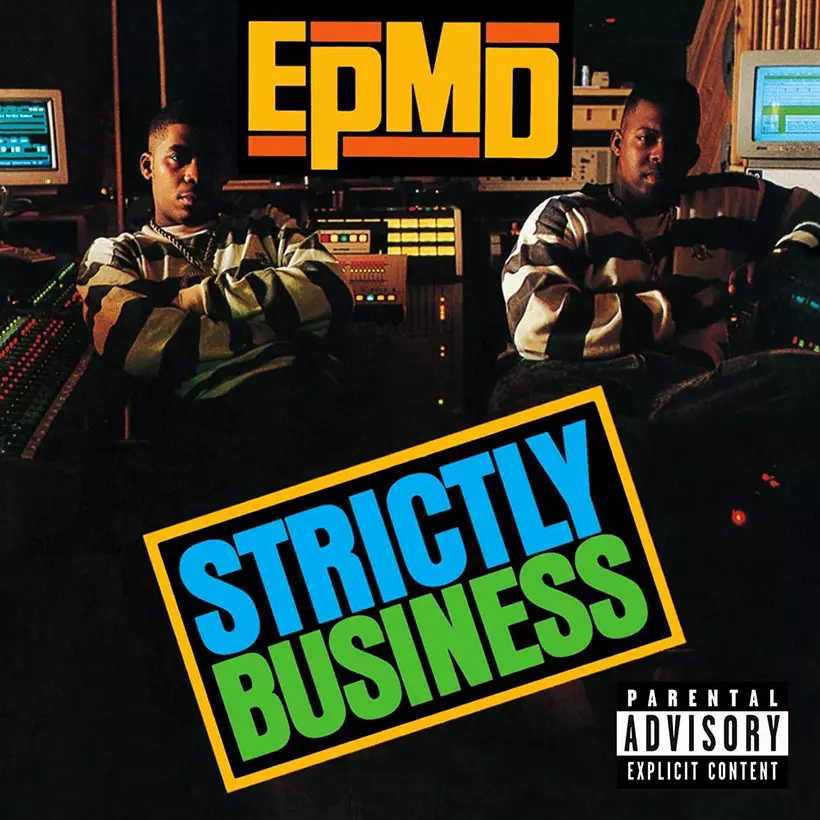
Erick Sermon and Parrish Smith were double-threats who ushered in a new sound for Hip-Hop. The Long Island, New York duo were each deft rappers and producers. Including DJ K La Boss and Strictly Business’s innovative engineer Charlie Marotta, the EPMD crew was a self-contained unit that brought slow flows and braggadocious rhymes.
The duo used diverse samples from 1960s R&B, 1970s Rock, and beyond for their debut. However, it was the heavy Funk E and P injected into Hip-Hop, from songs by artists like Zapp, The Whole Darn Family, and Rick James, that made them distinctive. Years before Dr. Dre, DJ Quik and Above The Law put G-Funk front and center, it was Erick and Parrish that had Funk lovers in Hip-Hop saying “g*ddamn.” This style primed ears for trends that would manifest for more than a decade. The independently-released album earned a gold plaque the same year it was released, legitimizing these relative Rap newcomers as the latest Long Islanders to command a crowd.
Straight Outta Compton – N.W.A. (1988)
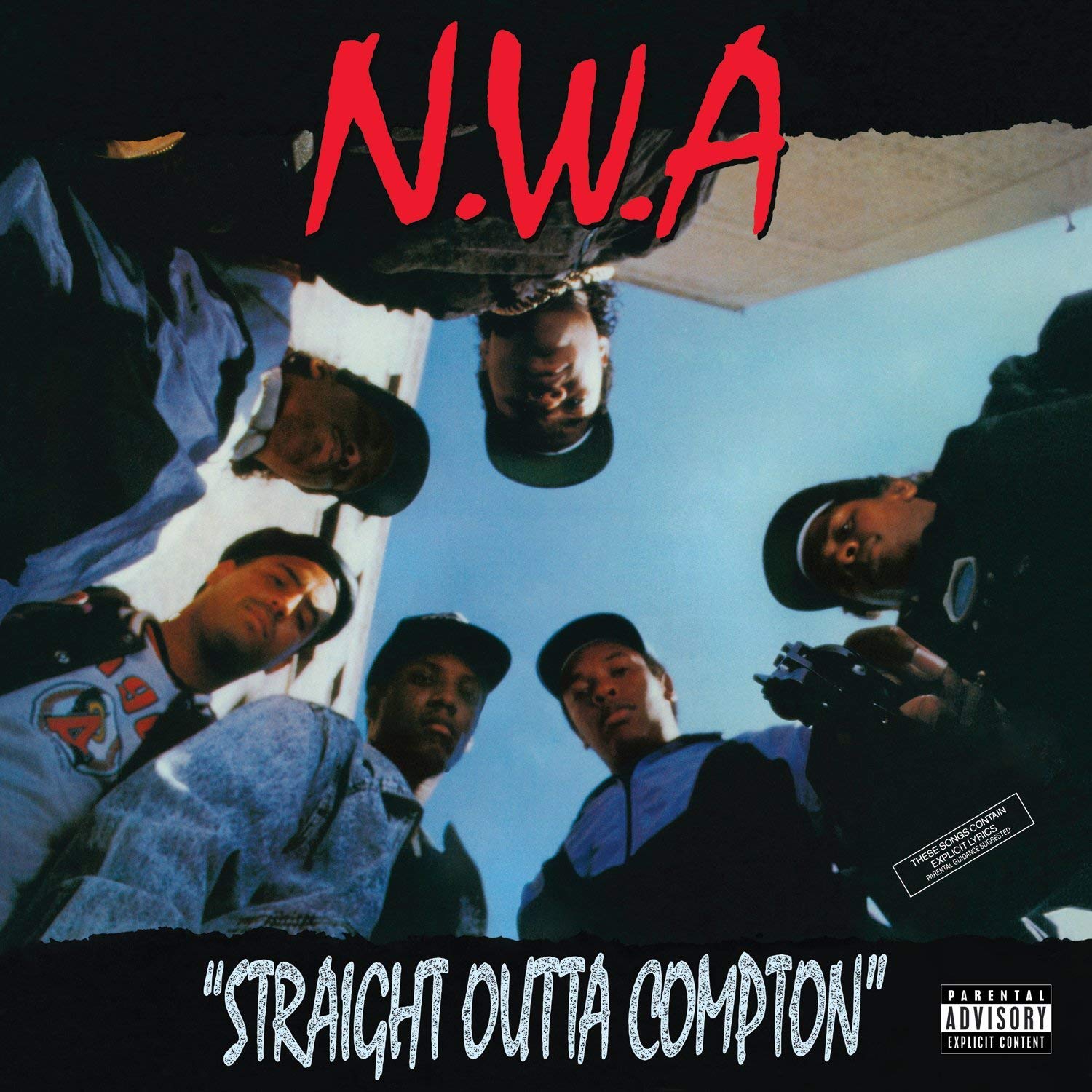
Fifteen years after Hip-Hop’s genesis, N.W.A. gave Rap fans a new and enduring landmark 2,800 miles from the Bronx. Straight Outta Compton presented a city, a lifestyle, and an attitude that has lasted in the Hip-Hop consciousness ever since. Ringleader Eazy-E, producer Dr. Dre, DJ Yella, and two deft MCs, Ice Cube and MC Ren, came together with Raiders caps, furrowed eyebrows, and no fear of repercussions. While the title track, “Gangsta, Gangsta,” and a “Dopeman” remix showed the ruthless world of Los Angeles gang life, sometimes in a cartoonish way, “F__k Tha Police” reflected a struggle going on worldwide. Cube’s lyrics frisked police brutality with rage and real-life experience, while Dre and Yella’s scratching added percussive kicks and stomps.
Straight Outta Compton disseminated this message and attacked an institution through music. The independently-released Gangsta Rap album went platinum by 1989 while prompting a menacing letter from the FBI. Thirty years later, the profane and provocative album sits in the Library of Congress and the Grammy Hall Of Fame.
It Takes A Nation Of Millions To Hold Us Back – Public Enemy (1988)

Public Enemy’s It Takes A Nation Of Millions To Hold Us Back was revolutionary on many levels. From its title to its final track, the album was a call to arms. Chuck D, with Flavor Flav as his foil, used his booming voice to deliver reports from what he called “the Black CNN” on what time it was for the people. The message and the themes it covered still resonate 35 years later.
It Takes A Nation also was a sonic revolution. The Bomb Squad production team of Hank and Keith Shocklee, Eric “Vietnam” Sadler, Gary G-Wiz, and Chuck, invented a whole new sound for Rap and all other music. Their style was a sonic avalanche of samples, instrumentation and sound effects that was Hip-Hop’s equivalent to Phil Spector’s Wall of Sound for Rock. In fact, the sampling was so dense, Hank Shocklee later speculated that it could never be replicated because “the cost of the records that we were doing would be so astronomical that it wouldn’t be worth doing it in the first place.” Chuck D said of the process “Our sole intention was to destroy music.” Instead, they showed the limitless creative potential of Hip-Hop.
Straight Out The Jungle – Jungle Brothers (1988)

Rather than promoting materialism or violence like many of their peers, The Jungle Brothers trio of Mike Gee, Afrika Baby Bam, and DJ Sammy B used their Straight Out The Jungle album for braggin’ and boastin’ about Blackness and book-smarts alongside songs about sex, swagger, and sonic safaris through their concrete jungle. Inspired by the social lane in Melle Mel’s lyrics on “The Message,” the trio, mentored by Mike’s uncle DJ Kool Red Alert, also paid name homage to Afrika Bambaataa. Amid far-reaching sample crates that drew from Funk, Rock, Soul, and Jazz, the Jungle Brothers’ Straight Out The Jungle also marked a bridge between Hip-Hop and House music . “I’ll House You” reflected Sammy B’s crates and the fact that they shared studio space with collaborator Todd Terry for this album.
Perhaps, most importantly, The Jungle Brothers and their album were the bricklayers of the Native Tongues movement. In 1988, the JBeez’ debut became a launchpad for themselves, as well as Murry Bergtraum High School classmate Q-Tip. Through class connections to Tribe, concerts with De La Soul, and an open door to like-minded artists, one of Hip-Hop’s finest movements was launched.
3 Feet High And Rising – De La Soul (1989)
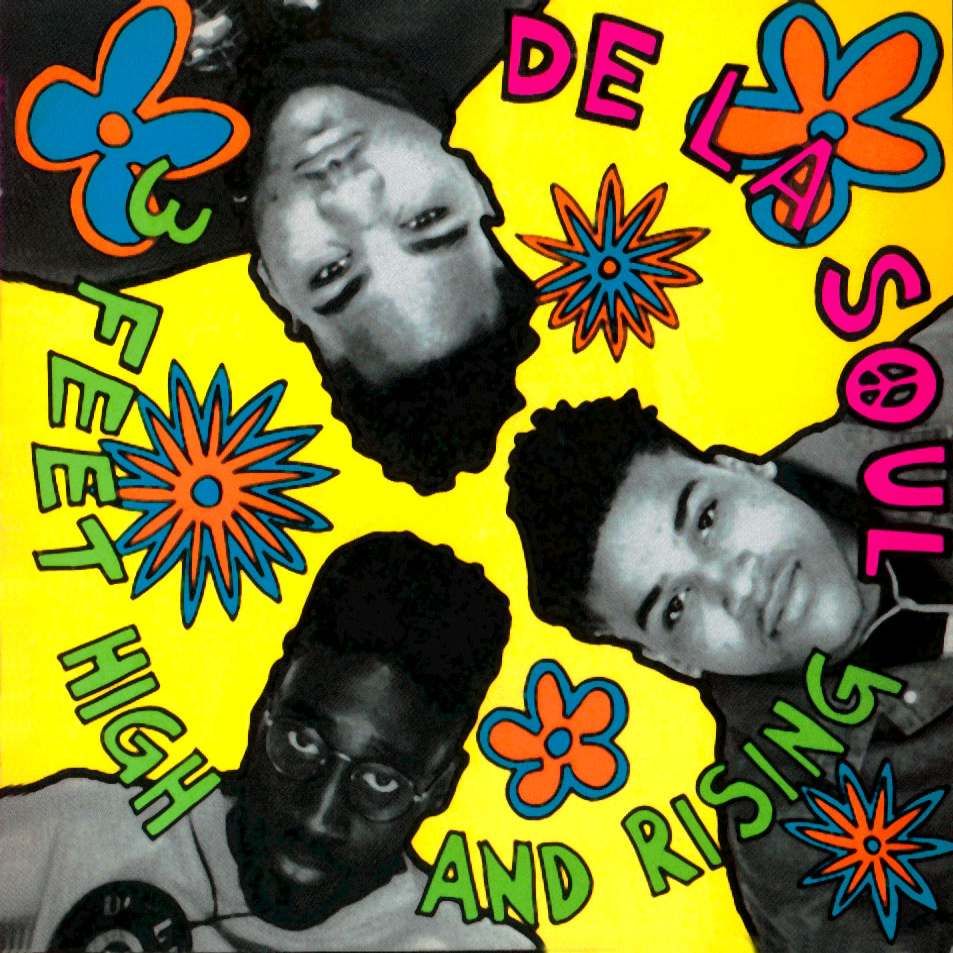
As the first decade of Hip-Hop albums came to an end, De La Soul and producer Prince Paul used 3 Feet High And Rising to implement a complete listening experience. While previous albums (from Long Island artists alone) boasted extensive samples and far-reaching crates, De La added narrative and skits. From the album’s game-show intro, it was clear that something thematic, humorous, and meaningful was taking place. In Brian Coleman’s Check The Technique, Posdnuos said that he, Trugoy The Dove, and Maseo had used skits on their bedroom demos. Producer Prince Paul then constructed a Native Tongues-filled ensemble studio environment with those ideas. De La Soul created a universe from their first album with a new style of speaking, characters, and plot. By design, the two-inch tape captured all of the eager energy in the room—from jeering to cheering.
3 Feet‘s blueprint expanded the Native Tongues’ foothold while influencing the album-making approach across the Hip-Hop landscape. Post-De La, many of Hip-Hop’s most outstanding albums were no longer a collection of great songs; they were storyboards.
No More Mr. Nice Guy – Gang Starr (1989)
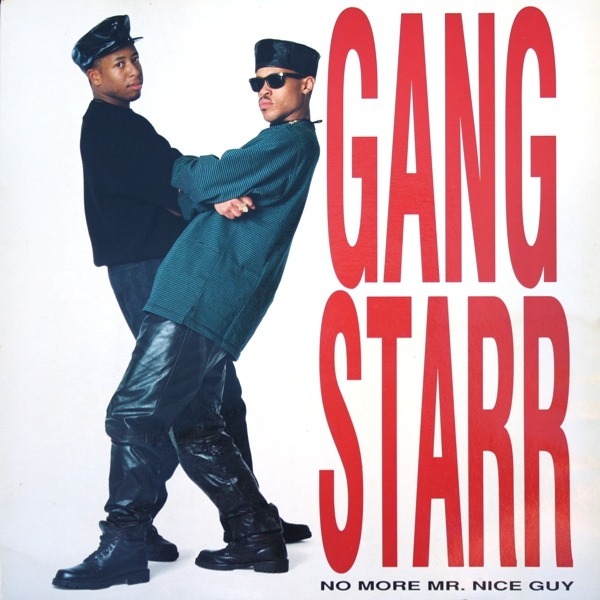
Hip-Hop had already flirted with Jazz in a way that garnered Grammy recognition, thanks to Herbie Hancock and Grandmixer DXT. However, Guru and DJ Premier—grandsons of Jazz purveyors—took what had been a novelty and made it into an influential new sub-genre on their No More Mr. Nice Guy debut. The 1989 union was born out of Guru comparing the beat tapes of his eventual partner to the layers found in the elder genre. By the time the two New York City transplants were making songs together, they emphasized this education in lyrics on “Jazz Music,” while pulling sounds from Ahmad Jamal, Charlie Parker, Miles Davis, and Ramsey Lewis at a time when James Brown’s soulful sounds dominated Hip-Hop.
Gang Starr’s Jazz embrace was followed by others. A Tribe Called Quest, Digable Planets, Pete Rock & CL Smooth and many others used Jazz soundscapes to propel their narratives. Decades later, Kendrick Lamar’s full submersion into the Jazz Rap genre led to one of the most acclaimed albums of all-time, with 2015’s To Pimp A Butterfly.
Efil4zaggin – N.W.A. (1991)

Many thought N.W.A. was over after Ice Cube’s scorched earth departure. Instead, their first full-length follow-up album to Straight Outta Compton became the first Rap album in history to go to #1 on the Billboard 200 album chart. It wasn’t just that Efil4zaggin topped the chart. It was how the album accomplished that feat.
Efil4zaggin’s release on May 28, 1991 coincided with a paradigm shift in how album sales were tabulated. Prior to May 25, 1991 Billboard chart position was based on shipments of albums to stores, radio airplay, and reports from stores as to what was selling. This system was highly susceptible to error and outright manipulation. The typical trajectory for albums was that they debuted low on the charts and then worked their way up after weeks or even months of singles releases, video airplay, and word of mouth. Michael Jackson’s Thriller, for example, was released on November 29, 1982, but did not top the album chart until February 26, 1983.
By May of 1991, Billboard had adopted Nielsen’s Soundscan system for its charts. The new technology tracked sales by scans of bar codes of albums that were sold, in real time. Almost overnight, chart behavior inverted. Albums suddenly started debuting at or near the top of the chart and then gradually declined in positioning. So, when Efil4zaggin debuted at #2 on the newly constructed chart and then ascended to #1 the following week, it shook the industry at its core. Not only did the album, which was filled with profanity, misogyny and gruesome violence, defy all the previous beliefs about chart trajectory, it also showed that albums could have massive success with zero radio airplay. More than any album before it, Efil4zaggin showed that Hip-Hop played by its own rules and that no gatekeepers could contain it.
Cypress Hill – Cypress Hill (1991)
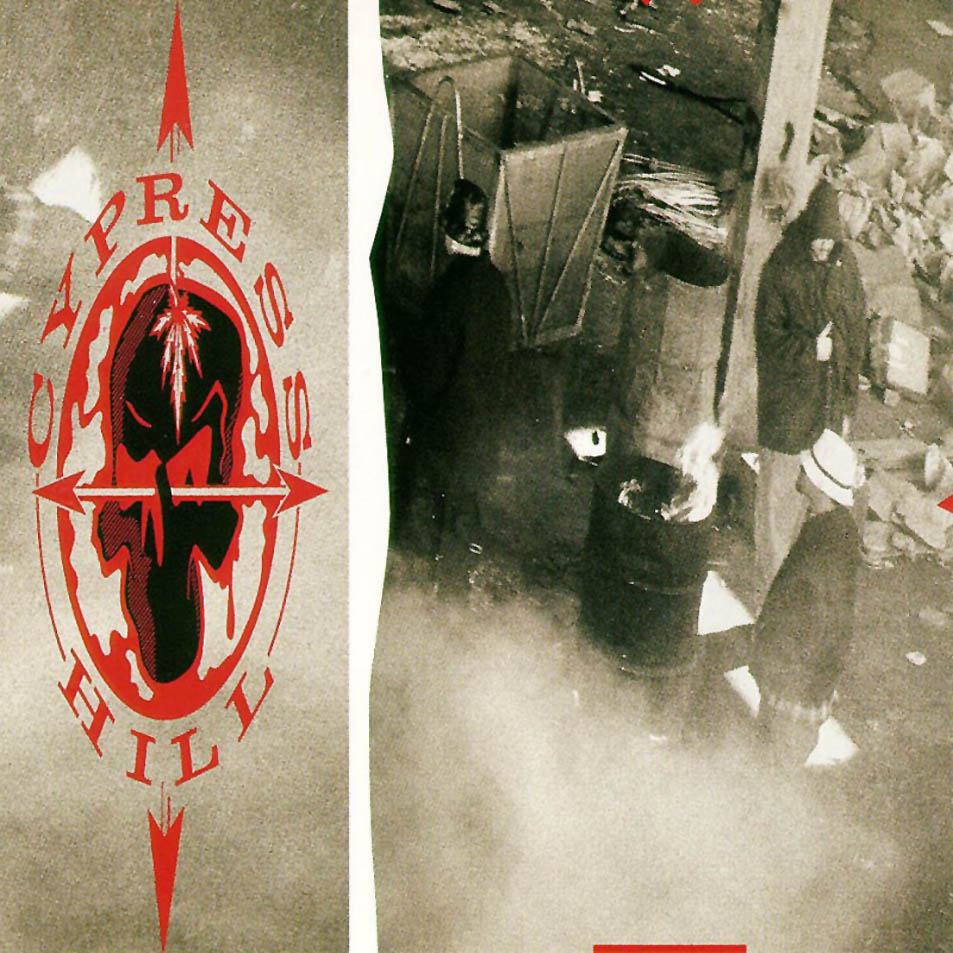
Since Hip-Hop’s inception, Latinos have played an essential role in the culture across all four of its elements. Atop the 1990s, Cypress Hill embraced and reflected that identity on their 1991 self-titled debut. The trio of MCs B-Real and Sen Dog, along with producer/DJ Muggs, named their union after the hilly part of Southgate, Los Angeles’ Cypress Avenue, and rapped about a lifestyle of getting profiled by cops, getting high, and getting even with the enemy. Behind the funky Gangsta Rap were two B-Boys-turned-rappers and a DMC champ turntablist.
Made of Cuban, Mexican, and Italian heritage, the group was multicultural—and cross-coastal. Muggs, an NYC native, moved with his family in 1984 to a Latino neighborhood. The collective leaned into its roots in “Latin Lingo,” an early example of a bilingual style. The Los Angeles-repping outfit sold over a million copies of the album. In 1992, they became the first Latino act to reach platinum (and soon, double platinum). Still together 30-plus years later, Cypress Hill and their debut paved the way for acts ranging from Big Pun and Fat Joe to Black Eyed Peas and Pitbull.
The Chronic – Dr. Dre (1992)
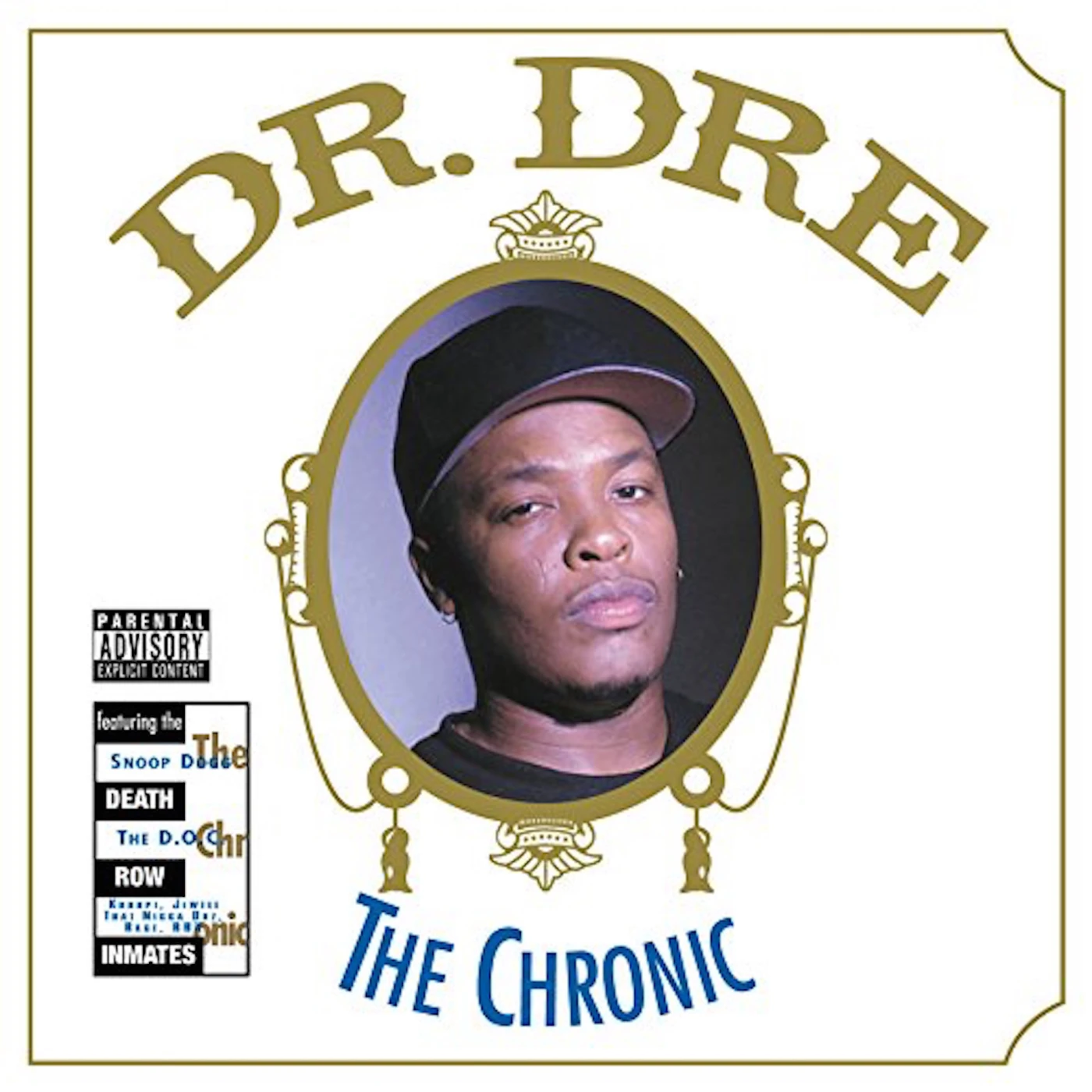
Prior to 1992, the Rap music heard on Top 40 radio generally was reserved for Pop-friendly acts like Vanilla Ice, Young MC, Tone Loc and, of course, the Beastie Boys. All of that changed with the release of Dr. Dre’s magnum opus, The Chronic.
The triple platinum-selling album boasted two Top 10 singles on the Billboard Hot 100 chart, and another that rose to #34. That meant that songs like “Nuthin’ But A ‘G’ Thang” (#2) and “F__k Wit Dre Day (And Everybody’s Celebratin’)” (#8) were suddenly Pop music, living right beside Whitney Houston, Duran Duran and Bon Jovi. And, Dre did this with absolutely no compromise to his newly-minted G-Funk sound. Thirty years later, it’s commonplace to hear all forms of Rap music in all venues (including the Super Bowl halftime show), but December 15, 1992 was “the day the n____z took over.”
Enter The Wu-Tang (36 Chambers) – Wu-Tang Clan (1993)

By 1993 Hip-Hop was manifesting its destiny through West Coast and Down South expansion. The music was polished and increasingly made for mainstream accessibility. The Wu-Tang Clan responded by swarming the consciousness with one of the most rugged and unconventional albums ever. Enter The Wu-Tang (36 Chambers) bonded nine competitive MCs with distorted samples and breakbeats to assert New York City’s grit, innovation, and refusal to conform. Eight MCs kicked in the door with the self-released single “Protect Ya Neck.” The subsequent full length LP carried on that energy. “When I finished that album, I thought it was the illest Hip-Hop record ever made,” RZA later claimed.
The album also birthed the careers of many of the most respected MCs ever to do it. The strife, the hunger, and the penitentiary chances of all nine men are captured over a cacophonous symphony of sounds. Ironically, despite its countercultural ethos (or maybe because of it), the album became only the second ‘90s New York Rap act debut to achieve platinum status (after Das EFX)—and then did it three times over. From the rugged lands of Shaolin, NYC earned a Rap victory that restored its perch atop the Hip-Hop universe.
Illmatic – Nas (1994)
Even before its April 1994 debut, Nas’ Illmatic was being widely-regarded as the greatest Rap album of all-time. The album was heavily bootlegged, with many hearing it several weeks before its official release. Since its debut, the title of GOAT Rap Album has endured in many circles. Regardless of Illmatic’s near-universal accolades, the title of greatest Rap album is and will always be debatable. What is beyond dispute, however, is the blueprint Illmatic provided for crafting superstar Rap albums, going-forward.
Prior to its release, it was more common than not that album production duties were helmed by a small team of beat-makers. Often, production was self-contained within the group or a stable of producers with whom the record company regularly worked. Illmatic broke the mold by commissioning several of the greatest producers of the era to all lend their masterful hands to the project. Large Professor, DJ Premier, Q-Tip, Pete Rock, and L.E.S. all made significant contributions. The extraordinary has now become ordinary, as almost every high profile Rap album today abides by the “Illmatic” template of production by committee.
Southernplayalisticadillacmuzik – OutKast (1994)
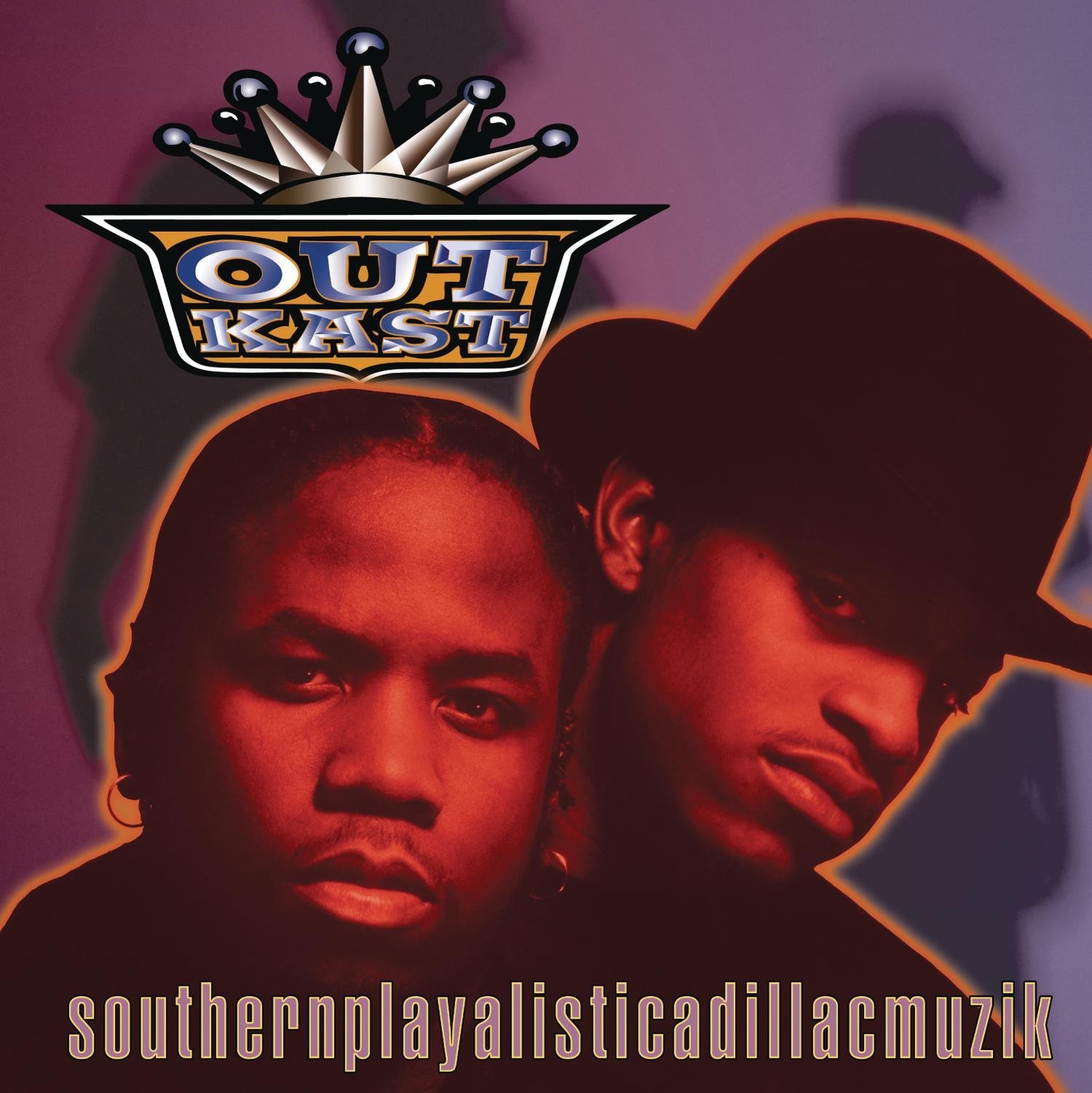
While New York City is Hip-Hop’s birthplace, Atlanta has been the culture’s hub for the longest. No artist is more responsible for that achievement than OutKast. At a time when Rap music was dominated by the East and West coasts, and Miami had receded into the background, Southernplayalisticadillacmuzik foisted the sounds of the South onto a nation-wide stage.
With the help of the Organized Noize production team, Andre 3000 and Big Boi delivered a soundtrack drenched in Southern richness. Their dialects were thick and unabashed. Rather than relying on samples, they used lush instrumentation to craft their own soul food. And, in a time when lyricism was still a prerequisite, Andre and Big showed that they could stand with the best of them. The album became both a commercial and a critical success, selling over a million copies and earning OutKast a Source Award for Best Newcomer, where, amidst boos, Andre delivered his now infamous line. Perhaps, he did not even realize that the South’s voice would still be Hip-Hop’s loudest nearly 30 years later.
The Miseducation Of Lauryn Hill – Lauryn Hill (1998)

Lauryn Hill’s first and only solo album carries many distinctions with those same qualifiers. It marked the first and only female Hip-Hop artist to win “Album Of The Year” at the Grammy Awards, the first and only album by a woman in Hip-Hop to be certified diamond, and the first and only to enter the Library of Congress’s National Recording Registry—where it was only very recently joined by fellow New Jersey native Queen Latfah’s All Hail The Queen.
L-Boogie flaunted her talents on an album that vented frustrations after breaking up with The Fugees while confronting motherhood, breakups, and love of God. While the LP strongly showcased Ms. Hill’s voice in song, her rapped passages were just as potent and evocative. The Miseducation Of Lauryn Hill drew inspiration from Wu-Tang Clan as much as from Jose Feliciano and Frankie Valli. Over three years before the iPod, Lauryn Hill seamlessly shuffled through genres for an inspired, pop culture-towering statement album that was all hers.
Mos Def & Talib Kweli Are Black Star – Black Star (1998)
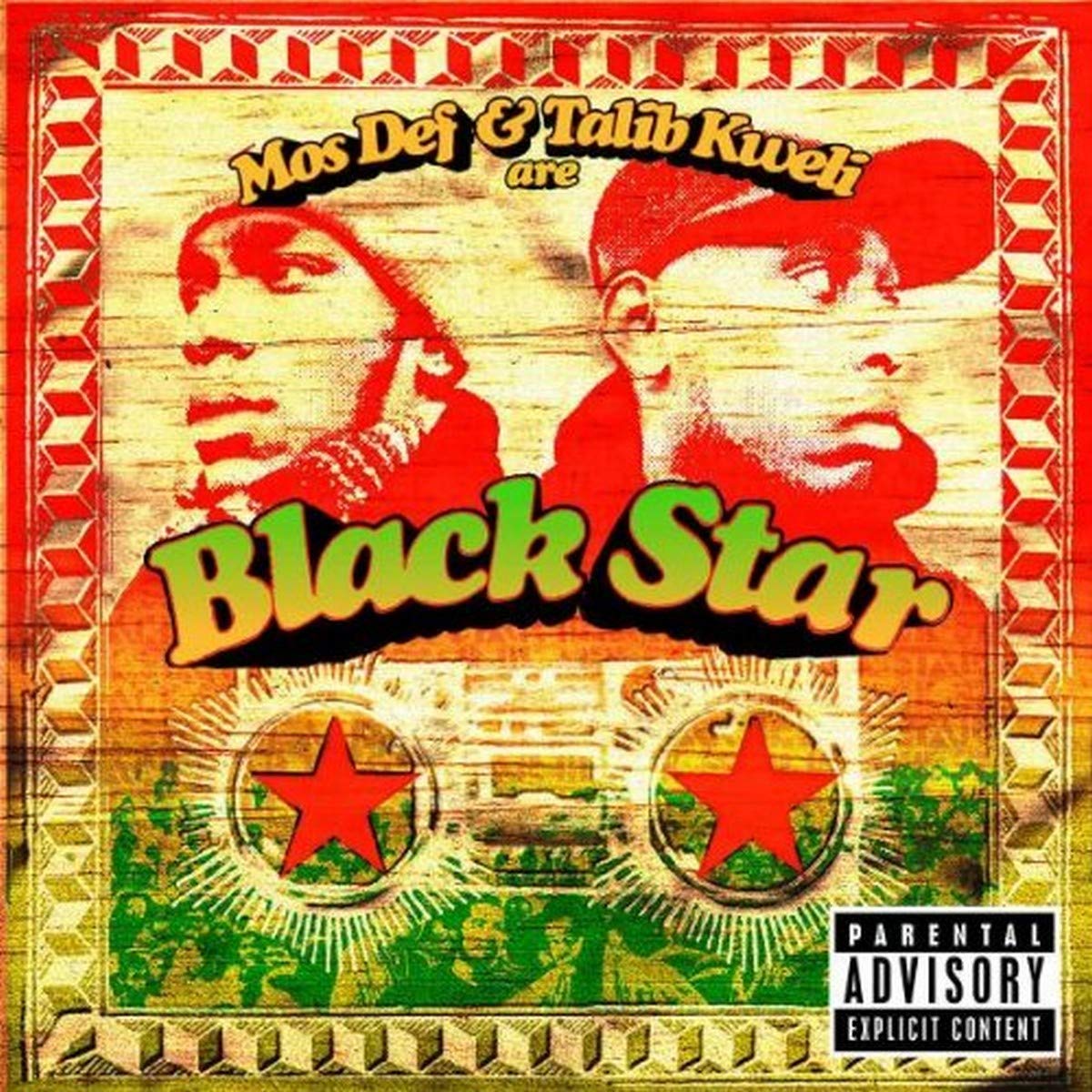
In the late 1990s, Hip-Hop’s underground was punching up. Before the commercial breakthroughs of Eminem, Slum Village, Atmosphere, or the reinventions of MF DOOM and Pharoahe Monch, Black Star introduced themselves at a high level in 1998 with Mos Def & Talib Kweli Are Black Star. With a handful of 12” singles and noteworthy features, the two artists came together for a body of work symbolic of the beauty and potency missing from major label-loving radio and video shows. As mainstream leaders looked to replace Tupac and Biggie, Black Star demanded justice for their murders. The duo flaunted Jazz, Soul, and Reggae backdrops to remind white washers that Hip-Hop is Black art—and should never stagnate.
The Rawkus Records full-length was a gathering field for like-minded contemporaries and some elder statesmen—including Common and Da Beatminerz. Like the Native Tongues they studied, Black Star became a launchpad that would yield gold records, Grammy nominations, and proof that some of the most creative Hip-Hop lies beneath the surface.
808’s & Heartbreak – Kanye West (2008)
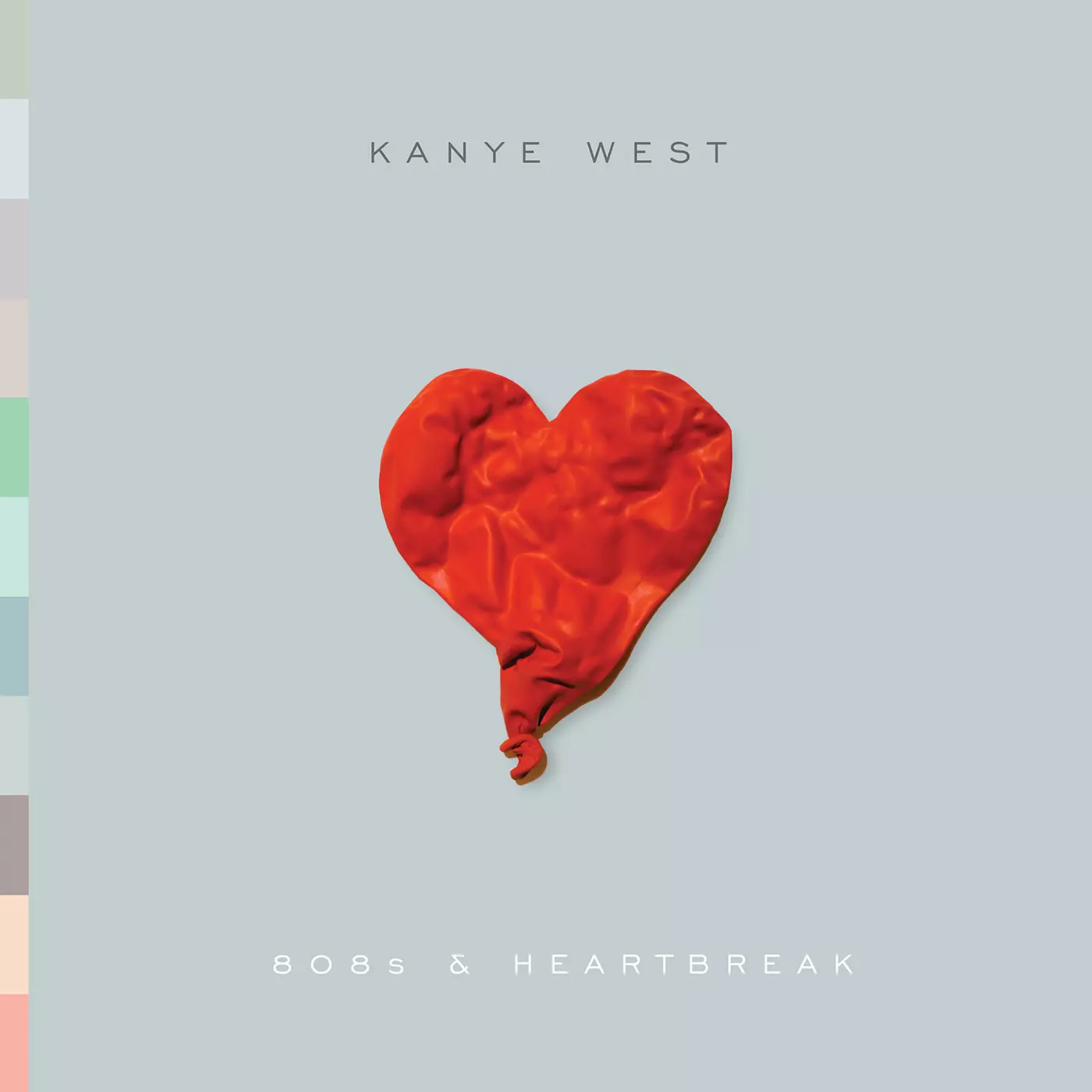
Kanye West, with a strong helping hand from album collaborator Kid Cudi, blended misery with melody on 808’s & Heartbreak to escort Rap music down a new corridor for the next 15 years and counting. After defeating 50 Cent and arguably mainstream Gangsta Rap the year before with Graduation, the Hip-Hop artist’s fourth album deviated from his acclaimed school-themed series to react to the death of his mother, a broken engagement, and how increasingly lonely it was at the top. While ‘Ye’s album was highly-personal, its promotion of melodic vocal deliveries and unapologetically simple lyrics established an everlasting trend. In late 2008, while top peers such as JAY-Z, Lil Wayne, and T.I. were still rapping-rapping, 808’s & Heartbreak primed audiences for Cudi and Drake in the short term while legitimizing pivots from Tyler, The Creator and Mac Miller in the next decade.
808’s & Heartbreak may have demarcated the end of “the old Kanye,” but it served as a mainstream forecast of an artful trend in Rap and R&B that was only beginning. Despite JAY-Z’s 2009 declaration of the death of autotune, the vocal effect borrowed by Kanye from T-Pain permeates the sounds of many of today’s biggest Rap stars, including Lil Baby, Future, Drake, Migos, Young Thug and countless others.
Crenshaw – Nipsey Hussle
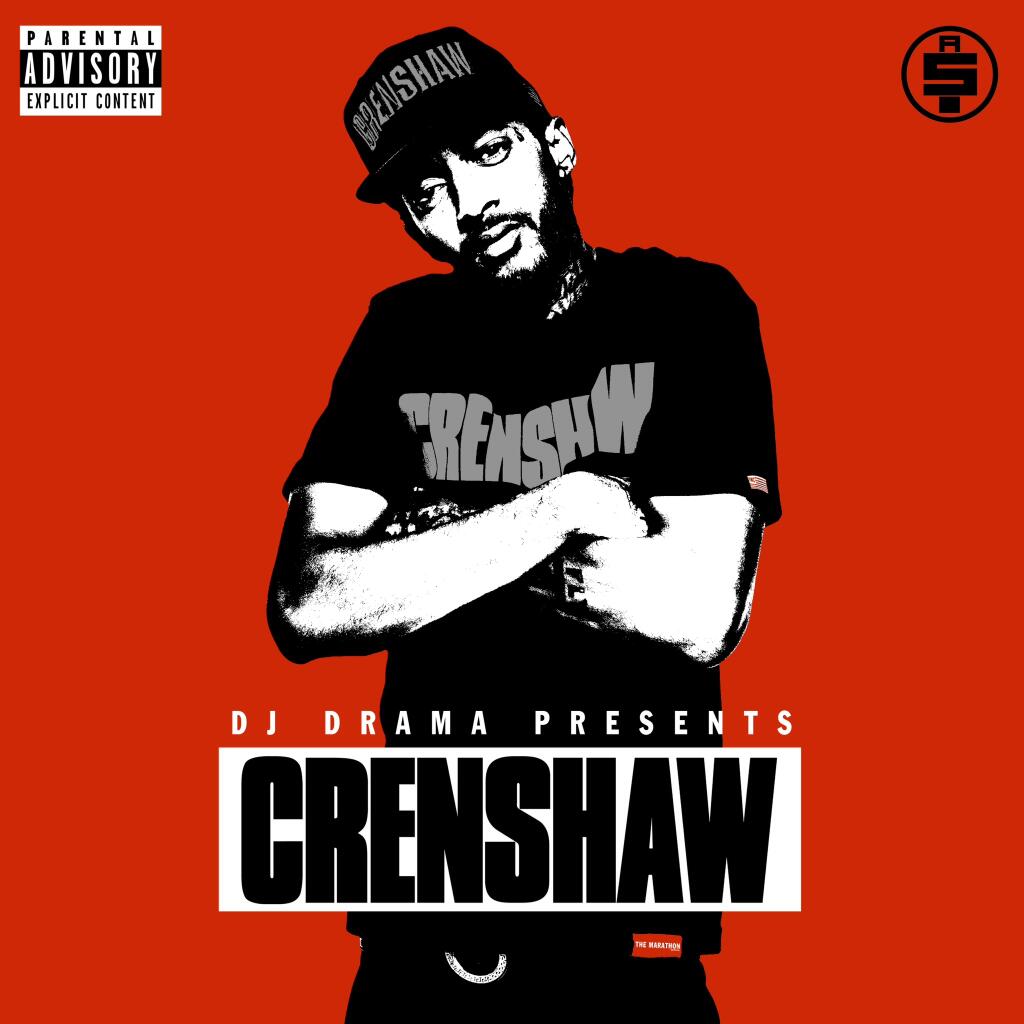
With the release of his 2013 mixtape Crenshaw, Nipsey Hussle simultaneously re-defined the “value” of music while also showing just what was possible for a new wave of DIY artists. Nipsey, who was as much an entrepreneur as he was an artist, demanded respect for the work he put into his music hustle by selling copies of his self-released CD mixtape for $100 a copy, “It’s a value-over-volume thing. If I’m goin’ to offer a product made with no compromise or concession to the platforms, then the way we sell it has to change,” he told Rap Radar upon release.
“It ISN’T the price of the plastic case and polyurethane disc; it’s the price of revolution! The price of rebellion against an industry that has tricked us all into making products that have no soul for fear of not being heard if we don’t.” Many supported that revolution, including JAY-Z who bought 100 copies of the mixtape and later signed Nipsey to his Roc Nation management company. “Crenshaw and Slauson (True Story)” underpinned this perspective, and the journey behind it, while the 9th Wonder-produced “Face The World” showed a would-be star in rising stride. In addition to inspiring DIY artists, Nipsey lit a path for more established acts like Kanye West, Griselda, Wu-Tang, and showed that even in a digital age, music is art worth way more than its weight in plastic.
DAMN. – Kendrick Lamar (2017)

Kendrick Lamar’s DAMN. is arguably the greatest concept album of all-time, not just in Rap, but in any genre. The 2017 masterpiece told not one, but two stories about fate vs. free will, depending on whether listeners played the album from front to back or back to front. The concepts contained on DAMN. have been the subject of articles, podcasts, college courses, and more. And, that’s not even the most important thing about the album.
Despite being robbed of winning the Grammy for “Album of the Year” in 2018, weeks later, DAMN. made history. On April 16, 2018, the album became the first ever non-Jazz or Classical musical work to win a Pulitzer prize for Musical Composition. According to The Associated Press, the Pulitzer board said DAMN. is a “virtuosic song collection” and that the album captures “the modern African American life.” With that achievement, the album more than lived up to its name.
Here is to 50 more years of Hip-Hop, and many more important albums…
